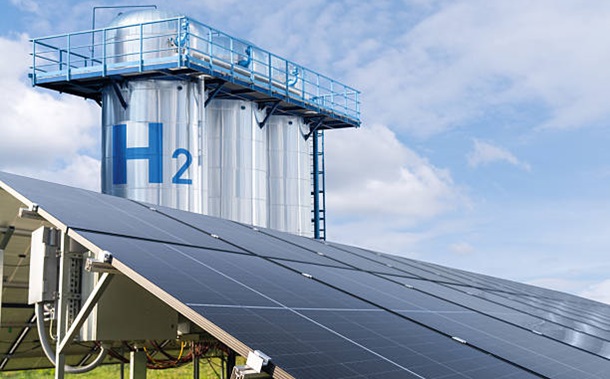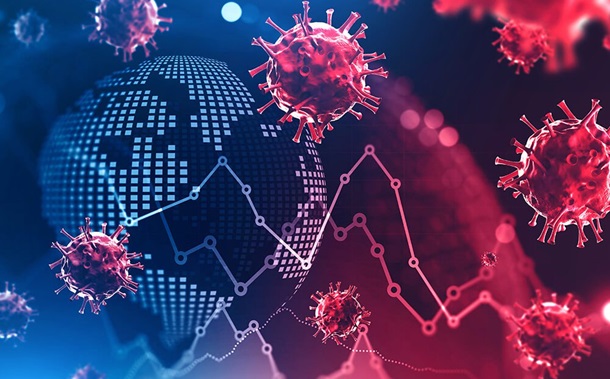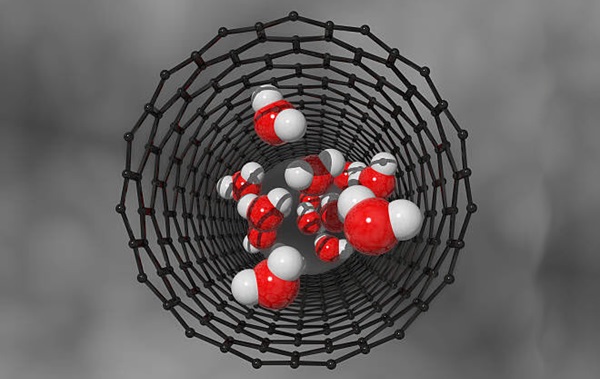Superoxide Dismutase Reduces Creatinine and NGAL by Restoring Oxidative Balance during Sepsis
Downloads
Doi:10.28991/ESJ-2022-06-02-06
Full Text:PDF
Downloads
Kolhe, N. V., Stevens, P. E., Crowe, A. V., Lipkin, G. W., & Harrison, D. A. (2008). Case mix, outcome and activity for patients with severe acute kidney injury during the first 24 hours after admission to an adult, general critical care unit: Application of predictive models from a secondary analysis of the ICNARC Case Mix Programme Database. Critical Care, 12(SUPPL. 1), 2. doi:10.1186/cc7003.
Uchino, S., Kellum, J. A., Bellomo, R., Doig, G. S., Morimatsu, H., Morgera, S., Schetz, M., Tan, I., Bouman, C., Macedo, E., Gibney, N., Tolwani, A., & Ronco, C. (2005). Acute renal failure in critically ill patients: A multinational, multicenter study. Journal of the American Medical Association, 294(7), 813–818. doi:10.1001/jama.294.7.813.
Pundziene, B., Dobiliene, D., & Rudaitis, Š . (2010). Acute kidney injury in pediatric patients: Experience of a single center during an 11-year period. Medicina, 46(8), 511–515. doi:10.3390/medicina46080073.
Mehta, P., Sinha, A., Sami, A., Hari, P., Kalaivani, M., Gulati, A., Kabra, M., Kabra, S. K., Lodha, R., & Bagga, A. (2012). Incidence of acute kidney injury in hospitalized children. Indian Pediatrics, 49(7), 537–542. doi:10.1007/s13312-012-0121-6.
Mehta, R. L., Bouchard, J., Soroko, S. B., Ikizler, T. A., Paganini, E. P., Chertow, G. M., & Himmelfarb, J. (2011). Sepsis as a cause and consequence of acute kidney injury: Program to Improve Care in Acute Renal Disease. Intensive Care Medicine, 37(2), 241–248. doi:10.1007/s00134-010-2089-9.
Shang, J., Wan, Y., Luo, C., Ye, G., Geng, Q., Auerbach, A., & Li, F. (2020). Cell entry mechanisms of SARS-CoV-2. Proceedings of the National Academy of Sciences of the United States of America, 117(21), 11727–11734. doi:10.1073/pnas.2003138117.
Manrique-Caballero, C. L., Del Rio-Pertuz, G., & Gomez, H. (2021). Sepsis-Associated Acute Kidney Injury. Critical Care Clinics, 37(2), 279–301. doi:10.1016/j.ccc.2020.11.010.
Peerapornratana, S., Manrique-Caballero, C. L., Gómez, H., & Kellum, J. A. (2019). Acute kidney injury from sepsis: current concepts, epidemiology, pathophysiology, prevention and treatment. Kidney International, 96(5), 1083–1099. doi:10.1016/j.kint.2019.05.026.
Qian, J. Y., Wang, B., Lv, L. L., & Liu, B. C. (2021). Pathogenesis of Acute Kidney Injury in Coronavirus Disease 2019. Frontiers in Physiology, 12, 586589. doi:10.3389/fphys.2021.586589.
Aksu, U., Demirci, C., & Ince, C. (2011). The pathogenesis of acute kidney injury and the toxic triangle of oxygen, reactive oxygen species and nitric oxide. Contributions to Nephrology, 174, 119–128. doi:10.1159/000329249.
Hsiao, S. Y., Kung, C. Te, Su, C. M., Lai, Y. R., Huang, C. C., Tsai, N. W., Wang, H. C., Cheng, B. C., Su, Y. J., Lin, W. C., Chiang, Y. F., & Lu, C. H. (2020). Impact of oxidative stress on treatment outcomes in adult patients with sepsis: A prospective study. Medicine, 99(26), e20872. doi:10.1097/MD.0000000000020872.
Galley, H. F. (2011). Oxidative stress and mitochondrial dysfunction in sepsis. British Journal of Anaesthesia, 107(1), 57–64. doi:10.1093/bja/aer093.
Rahbar Saadat, Y., Hosseiniyan Khatibi, S. M., Ardalan, M., Barzegari, A., & Zununi Vahed, S. (2021). Molecular pathophysiology of acute kidney injury: The role of sirtuins and their interactions with other macromolecular players. Journal of Cellular Physiology, 236(5), 3257–3274. doi:10.1002/jcp.30084.
Jin, L., Yu, B., Armando, I., & Han, F. (2021). Mitochondrial DNA-Mediated Inflammation in Acute Kidney Injury and Chronic Kidney Disease. Oxidative Medicine and Cellular Longevity, 2021, 9985603. doi:10.1155/2021/9985603.
Rosa, A. C., Corsi, D., Cavi, N., Bruni, N., & Dosio, F. (2021). Superoxide dismutase administration: A review of proposed human uses. Molecules, 26(7), 1844. doi:10.3390/molecules26071844.
Zarbock, A., Gomez, H., & Kellum, J. A. (2014). Sepsis-induced acute kidney injury revisited: Pathophysiology, prevention and future therapies. Current Opinion in Critical Care, 20(6), 588–595. doi:10.1097/MCC.0000000000000153.
Kumar, S., Gupta, E., Kaushik, S., Kumar Srivastava, V., Mehta, S. K., & Jyoti, A. (2018). Evaluation of oxidative stress and antioxidant status: Correlation with the severity of sepsis. Scandinavian Journal of Immunology, 87(4), 12653. doi:10.1111/sji.12653.
Webb, C. B., Lehman, T. L., & McCord, K. W. (2008). Effects of an oral superoxide dismutase enzyme supplementation on indices of oxidative stress, proviral load, and CD4:CD8 ratios in asymptomatic FIV-infected cats. Journal of Feline Medicine and Surgery, 10(5), 423–430. doi:10.1016/j.jfms.2008.01.008.
Naito, Y., Akagiri, S., Uchiyama, K., Kokura, S., Yoshida, N., Hasegawa, G., Nakamura, N., Ichikawa, H., Toyokuni, S., Ijichi, T., & Yoshikawa, T. (2005). Reduction of diabetes-induced renal oxidative stress by a cantaloupe melon extract/gliadin biopolymers, oxykine, in mice. BioFactors, 23(2), 85–95. doi:10.1002/biof.5520230204.
Warner, B. W., Hasselgren, P. O., James, J. H., Bialkowska, H., Rigel, D. F., Ogle, C., & Fischer, J. E. (1987). Superoxide Dismutase in Rats with Sepsis: Effect on Survival Rate and Amino Acid Transport. Archives of Surgery, 122(10), 1142–1146. doi:10.1001/archsurg.1987.01400220052010.
Constantino, L., Gonçalves, R. C., Giombelli, V. R., Tomasi, C. D., Vuolo, F., Kist, L. W., de Oliveira, G. M. T., Pasquali, M. A. de B., Bogo, M. R., Mauad, T., Horn, A., Melo, K. V, Fernandes, C., Moreira, J. C. F., Ritter, C., & Dal-Pizzol, F. (2014). Regulation of lung oxidative damage by endogenous superoxide dismutase in sepsis. Intensive Care Medicine Experimental, 2(1), 17. doi:10.1186/2197-425x-2-17.
Copeland, S., Shaw Warren, H., Lowry, S. F., Galvano, S. E., & Remick, D. (2005). Acute inflammatory response to endotoxin in mice and humans. Clinical and Diagnostic Laboratory Immunology, 12(1), 60–67. doi:10.1128/CDLI.12.1.60-67.2005.
Jesmin, S., Gando, S., Zaedi, S., Prodhan, S. H., Sawamura, A., Miyauchi, T., Hiroe, M., & Yamaguchi, N. (2009). Protease-activated receptor 2 blocking peptide counteracts endotoxin-induced inflammation and coagulation and ameliorates renal fibrin deposition in a rat model of acute renal failure. Shock, 32(6), 626–632. doi:10.1097/SHK.0b013e3181a5359c.
Shrum, B., Anantha, R. V., Xu, S. X., Donnelly, M., Haeryfar, S. M. M., McCormick, J. K., & Mele, T. (2014). A robust scoring system to evaluate sepsis severity in an animal model. BMC Research Notes, 7(1), 233. doi:10.1186/1756-0500-7-233.
Bugger, H., & Pfeil, K. (2020). Mitochondrial ROS in myocardial ischemia reperfusion and remodeling. Biochimica et Biophysica Acta - Molecular Basis of Disease, 1866(7), 165768. doi:10.1016/j.bbadis.2020.165768.
Kamis, F., Yegenaga, I., Musul, M., Baydemir, C., Bek, S., Kalender, B., & Baykara, N. (2016). Neutrophil gelatinase-associated lipocalin levels during the first 48 hours of intensive care may indicate upcoming acute kidney injury. Journal of Critical Care, 34, 89–94. doi:10.1016/j.jcrc.2016.04.012.
Anderberg, S. B., Luther, T., & Frithiof, R. (2017). Physiological aspects of Toll-like receptor 4 activation in sepsis-induced acute kidney injury. Acta Physiologica, 219(3), 573–588. doi:10.1111/apha.12798.
Di Micco, L., Quinn, R. R., Ronksley, P. E., Bellizzi, V., Lewin, A. M., Cianciaruso, B., & Ravani, P. (2013). Urine creatinine excretion and clinical outcomes in CKD. Clinical Journal of the American Society of Nephrology, 8(11), 1877–1883. doi:10.2215/CJN.01350213.
Wang, K., Xie, S., Xiao, K., Yan, P., He, W., & Xie, L. (2018). Biomarkers of sepsis-induced acute kidney injury. BioMed Research International, 2018, 6937947. doi:10.1155/2018/6937947.
Bellomo, R., Kellum, J. A., & Ronco, C. (2004). Defining acute renal failure: Physiological principles. Intensive Care Medicine, 30(1), 33–37. doi:10.1007/s00134-003-2078-3.
Mishra, J., Dent, C., Tarabishi, R., Mitsnefes, M. M., Ma, Q., Kelly, C., Ruff, S. M., Zahedi, K., Shao, M., Bean, J., Mori, K., Barasch, J., & Devarajan, P. (2005). Neutrophil gelatinase-associated lipocalin (NGAL) as a biomarker for acute renal injury after cardiac surgery. Lancet, 365(9466), 1231–1238. doi:10.1016/S0140-6736(05)74811-X.
Zhang, Y. li, Qiao, S. kai, Wang, R. ying, & Guo, X. Nan. (2018). NGAL attenuates renal ischemia/reperfusion injury through autophagy activation and apoptosis inhibition in rats. Chemico-Biological Interactions, 289, 40–46. doi:10.1016/j.cbi.2018.04.018.
Kjeldsen, L., Johnsen, A. H., Sengelov, H., & Borregaard, N. (1993). Isolation and primary structure of NGAL, a novel protein associated with human neutrophil gelatinase. Journal of Biological Chemistry, 268(14), 10425–10432. doi:10.1016/s0021-9258(18)82217-7.
Han, M., Li, Y., Liu, M., Li, Y., & Cong, B. (2012). Renal neutrophil gelatinase associated lipocalin expression in lipopolysaccharide-induced acute kidney injury in the rat. BMC Nephrology, 13(1), 25. doi:10.1186/1471-2369-13-25.
Smertka, M., Wroblewska, J., Suchojad, A., Majcherczyk, M., Jadamus-Niebroj, D., Owsianka-Podlesny, T., Brzozowska, A., & Maruniak-Chudek, I. (2014). Serum and urinary NGAL in septic newborns. BioMed Research International, 2014, 717318. doi:10.1155/2014/717318.
Chang, W., Zhu, S., Pan, C., Xie, J. F., Liu, S. Q., Qiu, H. B., & Yang, Y. (2018). Predictive utilities of neutrophil gelatinase-associated lipocalin (NGAL) in severe sepsis. Clinica Chimica Acta, 481, 200–206. doi:10.1016/j.cca.2018.03.020.
Pellegrino, D., La Russa, D., & Marrone, A. (2019). Oxidative imbalance and kidney damage: New study perspectives from animal models to hospitalized patients. Antioxidants, 8(12), 8. doi:10.3390/antiox8120594.
Macarthur, H., Couri, D. M., Wilken, G. H., Westfall, T. C., Lechner, A. J., Matuschak, G. M., Chen, Z., & Salvemini, D. (2003). Modulation of serum cytokine levels by a novel superoxide dismutase mimetic, M40401, in an Escherichia coli model of septic shock: Correlation with preserved circulating catecholamines. Critical Care Medicine, 31(1), 237–245. doi:10.1097/00003246-200301000-00037.
Chen, G. D., Zhang, J. L., Chen, Y. T., Zhang, J. X., Wang, T., & Zeng, Q. Y. (2018). Insulin alleviates mitochondrial oxidative stress involving upregulation of superoxide dismutase 2 and uncoupling protein 2 in septic acute kidney injury. Experimental and Therapeutic Medicine, 15(4), 3967–3975. doi:10.3892/etm.2018.5890.
Pickkers, P., Heemskerk, S., Schouten, J., Laterre, P. F., Vincent, J. L., Beishuizen, A., Jorens, P. G., Spapen, H., Bulitta, M., Peters, W. H. M., & van der Hoeven, J. G. (2012). Alkaline phosphatase for treatment of sepsis-induced acute kidney injury: A prospective randomized double-blind placebo-controlled trial. Critical Care, 16(1), 14. doi:10.1186/cc11159.
Zhang, W., Yang, S., Cui, L., & Zhang, J. (2016). Neutrophil gelatinase-associated lipocalin worsens ischemia/reperfusion damage of kidney cells by autophagy. Renal Failure, 38(7), 1136–1140. doi:10.3109/0886022X.2016.1158041.
De Blasio, M. J., Ramalingam, A., Cao, A. H., Prakoso, D., Ye, J. M., Pickering, R., Watson, A. M. D., de Haan, J. B., Kaye, D. M., & Ritchie, R. H. (2017). The superoxide dismutase mimetic tempol blunts diabetes-induced upregulation of NADPH oxidase and endoplasmic reticulum stress in a rat model of diabetic nephropathy. European Journal of Pharmacology, 807, 12–20. doi:10.1016/j.ejphar.2017.04.026.
Cao, P., Ito, O., Ito, D., Rong, R., Zheng, Y., & Kohzuki, M. (2020). Combination of Exercise Training and SOD Mimetic Tempol Enhances Upregulation of Nitric Oxide Synthase in the Kidney of Spontaneously Hypertensive Rats. International Journal of Hypertension, 2020, 2142740. doi:10.1155/2020/2142740.
Lin, J., Fernandez, H., Shashaty, M. G. S., Negoianu, D., Testani, J. M., Berns, J. S., Parikh, C. R., & Perry Wilson, F. (2015). False-positive rate of AKI using consensus creatinine–based criteria. Clinical Journal of the American Society of Nephrology, 10(10), 1723–1731. doi:10.2215/CJN.02430315.
Lippi, G., & Plebani, M. (2012). Neutrophil gelatinase-associated lipocalin (NGAL): The laboratory perspective. Clinical Chemistry and Laboratory Medicine, 50(9), 1483–1487. doi:10.1515/cclm-2012-0344.
- This work (including HTML and PDF Files) is licensed under a Creative Commons Attribution 4.0 International License.



















